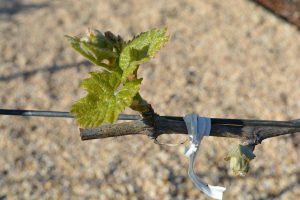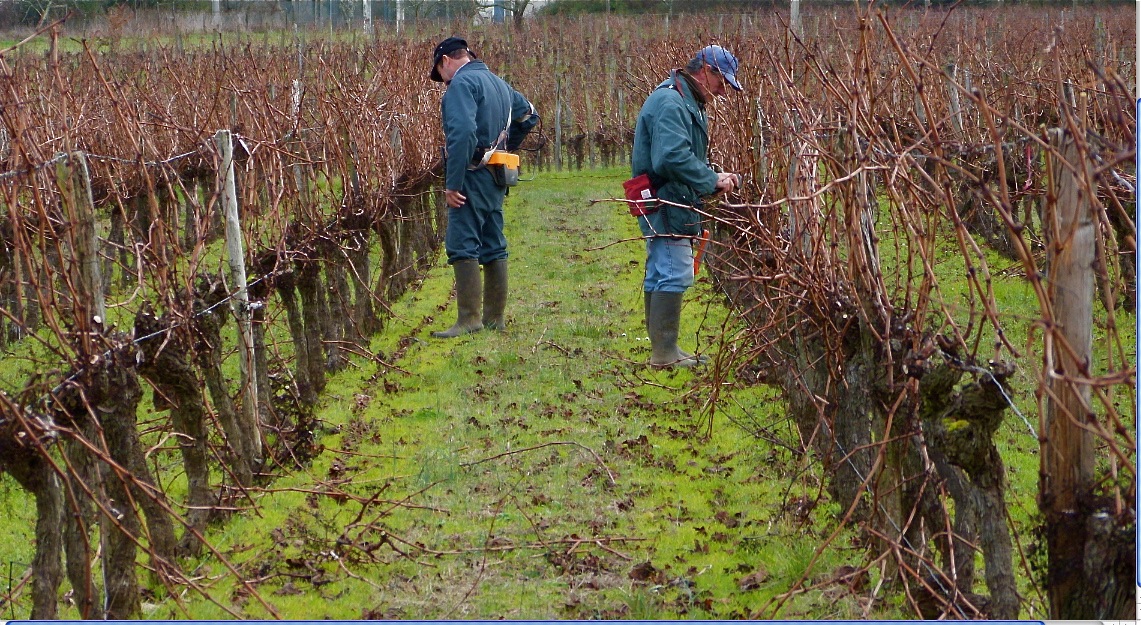The grapevine is a climbing plant that originally grew in trees. Left to its own devices, it tends to grow horizontally, because the first buds to burst are generally the ones at the very end of the cane tips. The vines should therefore always be pruned, to counter the tendency of rampant growth; otherwise, it weakens the structure of the plant—the vine becomes fragile, difficult to tend, and unable to bear high-quality fruit.
If the vines are not pruned, then the risk of fungal diseases also rises significantly. More and more buds sprout, and the number of shoots and bunches of grapes increases. The shoots get thinner, the grapes get smaller, and quality can suffer considerably as a result.

Pruning influences both the quantity and quality of the yield, by determining how many buds are allowed to remain on the vine. Each bud puts forth a shoot, which in turn bears up to three bunches of grapes. The level of productivity depends on the vine variety and on the location of the buds on the stock.
If the crop is large, then there may be too many bunches for the vine’s ability to photosynthesize. This results in an unfavorable leaf-to-fruit ratio and makes it difficult for the grapes to ripen. In addition, because the grapes are given priority access to nutrients, the vine itself is weakened, as it cannot build up much in the way of reserves. By contrast, if too few buds remain on the vine, then the plant does not have a sufficient outlet for its growth capabilities. Plant growth may be vigorous (with thick shoots), but the fruit crop will be insignificant. This makes no improvement to the quality of the grapes, but simply leads to a reduction in yield and income.

The art of vine pruning lies in finding the ideal compromise for an optimal crop. The general balance of the vine must be taken into account, to avoid an overly dense curtain of foliage. It is also important to limit the number of cuts made to the vine, because these are the entry points for diseases affecting the wood.
The timing of pruning influences the timing of budding. The experienced winegrower will prune as late as possible. Here, in Napa, pruning usually starts in February, but some wineries don’t prune until March. One thing is certain, however: it is vital to wait until all the leaves have fallen and the sap has retreated, because only then will the plant have finished storing up the reserves that will see it through winter and start growth again in spring. In Napa, where we have frost, it is advisable to delay budding for as long as possible. Consequently, sites at risk from late frost are the last to be pruned. Cane pruning is preferred in such areas because the buds on the ends of the canes are the first to burst, while the others do not come to life until somewhat later.
Pruning takes a long time, and if the wood is thick, it can be difficult and strenuous work. We thank the field workers for their hard work and commitment to high-quality product.
Although pruning partially determines future yield size, it is not an exact science. Numerous factors influence the fruitfulness of a particular bud, the success of flowering, and the other stages of the growth phase. If it becomes clear, after flowering, that the crop is too large, then individual flowerheads and bunches can always be removed at that point.
We invite you to join us in Napa where we will make every effort to give you a well-rounded perspective of what it takes to produce some of the best wines in the world.
Cheers!
Jona Mendoza Fabiani
Wine Coach
EDIT: Thanks to our friends at Young Inglewood Vineyards, here’s video from this spring’s pruning, courtesy of Mark Simon. Enjoy!

Very nice article Jona! Here is a short video of the vineyard cru pruning our estate vineyard a week or so ago.
https://www.youtube.com/watch?v=J1OJyvSEulE